Asif M Basit, Ahmadiyya Archive & Research Centre
I had the good fortune to be granted time by Hazrat Khalifatul Masih Vaa on the morning of 13 February 2021.
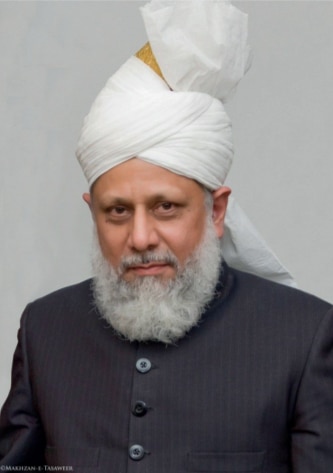
I mentioned how the youth had become acquainted with Chaudhry Hameedullah Sahib through Huzoor’s Friday Sermon the previous day – and what a beautiful source of introduction it had been! I also mentioned to Huzooraa something that I had been thinking about for sometime.
“Huzoor, those who saw Hazrat Musleh-e-Maudra closely are now falling in number very rapidly.”
Huzooraa replied, “Only very few are left. We have Mir Mahmud Ahmad Nasir Sahib. And Jamil-ur-Rahman Rafiq Sahib …”
I then expressed another point that had been on my mind for quite some time.
“Huzoor, you mention Hazrat Musleh-e-Maudra very often and the love you do so with, makes it sound like a point-of-action. But English-speaking youth have very little material that they can read and get to know Hazrat Musleh-e-Maudra more.”
On this, Huzooraa said:
“Some of his addresses and books have been translated. Many more are underway. What you can do is ask Al Hakam to publish an introduction to Hazrat Musleh-e-Maud’sra books that have been translated and also guide readers on how this material can be accessed.
“What is even more important is to explain that the prophecy about Musleh-e-Maud was actually an oracle of the Holy Prophet Muhammadsa fulfilled through the Promised Messiahas in the form of Hazrat Mirza Bashiruddin Mahmud Ahmadra. This prophecy by the Holy Prophetsa was with reference to the Promised Messiahas of the Latter Days; this means that this son was to play an instrumental role in rejuvenating Islam. It is not a negligible prophecy, but rather holds a great station in the promised prosperity of Islam.
“There are many aspects of this prophecy and the youth should be introduced to all of them; however, the aspect that can be more appealing for the modern mind is that ‘he shall be full of knowledge, spiritual and secular’.

be filled with secular and spiritual knowledge” | First edition of Peshgoi Musleh-e-Maud (the prophecy pertaining to the Musleh-e-Maud)
“So, if the youth, and others as well, are told that the son of the Promised Messiahas, as foretold by the Holy Prophetsa, was granted knowledge of all sorts and that too in abundance, they will be intrigued and will strive to know more about Hazrat Musleh-e-Maudra.
“What must be mentioned is that Hazrat Musleh-e-Maud’sra formal education was next to none. He hardly made it to matriculation when, owing to ill health, he had to discontinue. His were not the days where the Internet could provide information from all around the world easily and readily, nor were libraries and bookshops of secular knowledge easily accessible in cities, not to speak of a small town like Qadian.
“But yet, to have knowledge of world affairs and their in-depth understanding, then analysing these affairs and presenting his analyses with great confidence to the world through publications – not only to the general public but to heads of states and dignitaries – is not something ordinary.
“He kept a close eye on the political, economic and social affairs of the world. He would know where such state of affairs was leading the world to; what could happen if matters continued in the same direction and if the approach was to be changed in such and such manner, it could bring about so and so results. And affairs would unfold in the manner as he had foreseen.
“So, if you only start writing about ‘he shall be full of knowledge, spiritual and secular, you may not be able to cover only this aspect in many episodes.
Huzooraa then said:
“I have also thought about introducing the personality and character of Hazrat Musleh-e-Maudra as well as his writings.”
Dear readers, you will have, like myself, already started to wait for the day when we will get to hear about the great persona of Hazrat Musleh-e-Maudra directly from Hazrat Amirul Momineenaa!
For now, in compliance with Huzoor’s instruction, we will take a quick glance at the extraordinary knowledge of Hazrat Musleh-e-Maudra (an introduction to books of Hazrat Musleh-e-Maudra translated to English is being given seperately in this issue).
While writing about only a selection of such matters that show us Hazrat Musleh-e-Maud’sra insight and knowledge, I could hear the echo of Huzoor’saa words about not being able to do justice to only this aspect alone. As you read the write-up below, you will have to share with me the thirst of knowing more.
One with immense knowledge, spiritual and secular – the Musleh-e-Maud
Twin birth
Before writing anything on this topic, we need to remember that the birth of Hazrat Mirza Bashiruddin Mahmud Ahmadra was twinned with the birth of Jamaat-e-Ahmadiyya.
When the Promised Messiahas published the announcement that he would now accept bai‘at from people to form a jamaat, he also included in it the announcement of the birth of the promised son. This announcement was made on 12 January 1889.
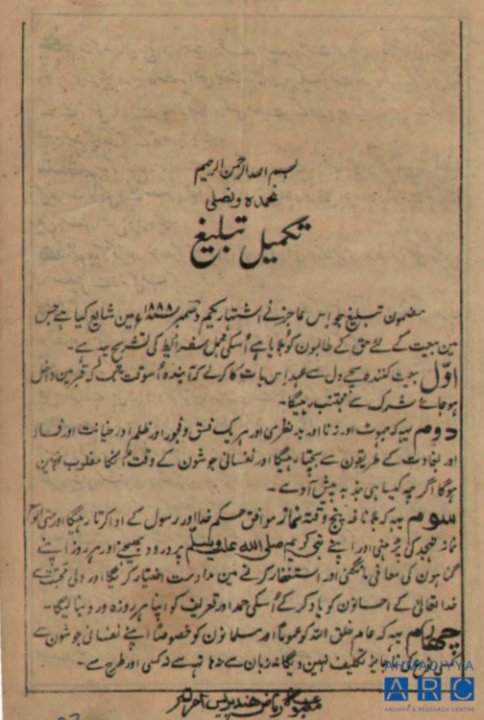
Both these events were a fulfilment of two prophecies of Holy Prophetsa of Islam: that the Promised Messiah and Mahdias would found a jamaat and that he would marry and be blessed with progeny.
It is interesting to note that both these prophecies were fulfilled at the same time and both made the world amazed in great awe; both continued to rise to heights of success in extremely unfavourable conditions.
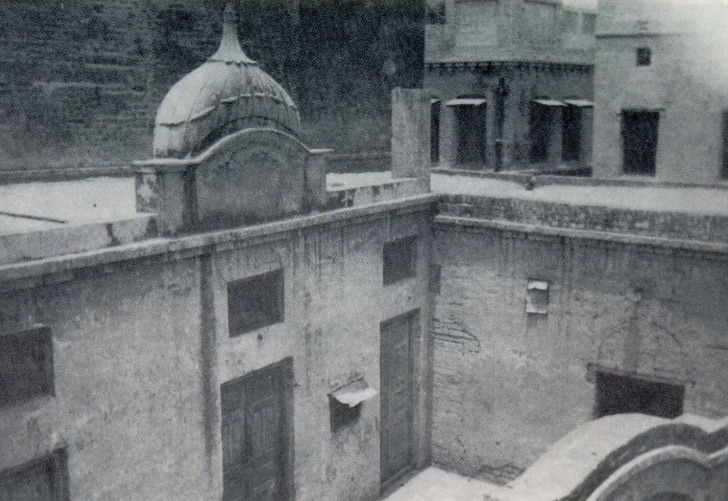
A literary magazine at a very young age
The Tash-heezul-Azhan magazine was started under his own editorship by Hazrat Mirza Bashiruddin Mahmud Ahmadra in 1906, when he was only 17 years old. The articles that he wrote for this journal spoke volumes in favour of him being blessed with vast knowledge.
The very first issue (March 1906) carried an “Introduction” that spanned many pages. This editorial was a trove of knowledge in its own right; starting from the creation of Adam, making its way through the winding roads of human history, flying over the hills of religious evolution, floating through the expansive seas of the age of the advent of Islam, it landed on the plains of the age of the Promised reformer and Mahdi of the Latter Days and what it called for.
This magazine continued to be published for many years, providing ample proof in every issue that the very young editor was one with extraordinary intellectual capabilities.
The First Missionary Conference, organised by the likes of Rev Zwemmer and Rev Wherry, was held in Cairo in April 1906. A missionary of great renown, Rev Weitbrecht, read a paper titled The New Islam of India, which looked at reform movements with special reference to the Aligarh and the Ahmadiyya movements. He tried to prove that in their attempts to keep at par with the modern world, these reform movements were having to tweak basic teachings of Islam. (The Mohammedan World of Today, Edited by Zwemmer and Wherry, Flemming H Revell Co, London [1906])
Hazrat Sahibzada Mirza Mahmud Ahmadra, who was only 19, wrote a firmly argued article and refuted Weitbrecht’s false pretences; the article was published in Tash-heezul-Azhan in April 1906. Without going into details of the article, it should suffice here to only look at the outcome of this article written by a very young champion of Islam.
The same missionary, Herbert Weitbrecht, was to later write in the January 1925 issue of The Muslim World an article titled “The Ahmadiyya Movement”.
He opened the article by saying that readers must be wondering why so much has been said about the Ahmadiyya in recent issues of The Muslim World. He then went on to state the reason:
“It is worthy of attention because it represents one aspect of a larger movement, the reaction of Asia against the prevalence of European culture and influence. On the religious side of this reaction, the Ahmadiya represents Indian Islam, the largest body of Moslems in Asia and the world, which has come into the most effective contact with Christian evangelism, has taken its imprint most largely, and reacted against it most strongly.”
He went on to declare the Ahmadiyya Movement as being the greatest challenge for Christian evangelism.
A young defender of Islam
It was around the same age that Hazrat Mahmudra was in Lahore when he had the chance to have a meeting with the principal of the Missionary College (later to be known as Forman Christian College). Huzoorra discussed with the principal, who happened to be a seasoned evangelical missionary, the Christian belief of salvation through the crucifixion of Jesus Christ.
The book – included in Anwar-ul-Ulum with the title Pahari Wa‘z (Sermon of the Mount) – is actually an account of the discussion Huzoorra had at a very young age with a missionary, John Youngson, while he was visiting Dalhousie.
Acknowledgment and recognition
Hazrat Mirza Bashiruddin Mahmud Ahmadra was only 23 when a book on great journalists of India was published. Titled, Akhbar Nawison ke Halaat (Biographical accounts of journalists), by Muhammadudin Fauq mentioned, among other renowned journalists, an introduction to Hazrat Mahmudra with reference to Tash-heezul-Azhan.
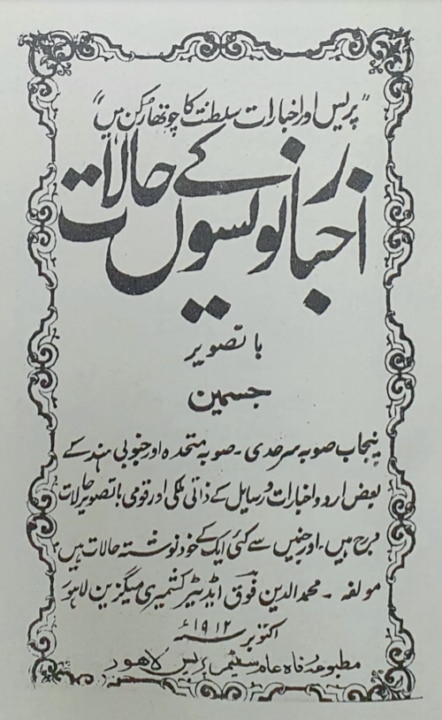
Huzoor’s articles were so rich in intellectual wealth that even opponents of Ahmadiyyat would take pride in publishing his works. For instance, the Nizam-ul-Mashaekh, Delhi, published Huzoor’s article titled “Khatamun-Nabiyyin” (the Seal of Prophets) in their March 1911 issue.
The article depicted the grandeur of this status of the Holy Prophetsa of Islam in a way that, despite doctrinal disagreements, the magazine felt honoured to having it in their publication.
Spokesman of Muslim rights
For such a young journalist – who ran his journal from a small town with next-to-none resources – is of great significance. The excellence of Hazrat Mahmud’sra editorial, journalistic and intellectual skills would remain incomplete without the mention of the newspaper Al Fazl.
Launched in June 1913, when he was only 24, the Al Fazl, Qadian took off at an astonishing pace and with a steep outreach trajectory. It was soon to become one of the major newspapers in India that the general public, as well as political circles and dignitaries, looked forward to reading in order to become aware of the Ahmadiyya viewpoint on current affairs. Why this was such, we will come to that later.
Shining even brighter
Having been elevated to the station of Khalifatul Masih, Hazrat Mirza Bashiruddin Mahmud Ahmad’sra knowledge and intellectual prowess shone with an even brighter light. Now, the whole world was to benefit from the “knowledge, spiritual and secular” of this al-Musleh al-Maud – the promised reformer.
Alongside this, many other aspects of the prophecy started to become manifest as “nations benefitted from him” and prisoners were “set free from bondage” and that he would become famous “to the corners of the earth”. The prophecy that Islam will gain supremacy through this promised reformer became manifest in many ways but more so through his analyses and advice on global political issues always remained superior above others.
The Holy Quran to the West
In 1915, at the very onset of his Khilafat, he published the English translation and brief commentary of the first part of the Holy Quran. He arranged for this publication to be sent to universities and libraries in the Western world. It was the first attempt of its kind as it came from the pen of a Muslim himself and thus, attracted the attention of orientalists. Worth mentioning are reviews by RF McNeile in The Muslim World (April, 1916) and Charles C Torey in the Harvard Theological Review (October, 1917).
What must not be forgotten here is that this work of English translation and commentary went to the credit of a Khalifa with very limited resources and based in a tiny town in the Punjab. On the other hand, running parallel, was the Ottoman Caliphate – heading an extremely resourceful empire with all facilities at their disposal – who failed to publish a single translation in the six centuries of their reign; not even in their own Turkish language. (M Bret Wilson, “The First Translations of the Quran in Modern Turkey”, International Journal of Middle East Studies [2009])
With this polarity in terms of resources, wealth, facilities and manpower, does it not go to prove the divinely guided knowledge of the one born as a manifestation of a divine prophecy?
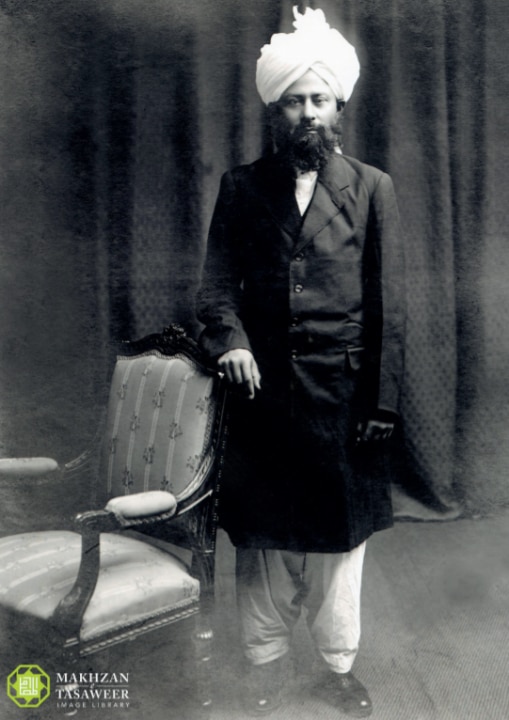
Orientalists head to Qadian
It was the magnetism of this extraordinary person – Hazrat Mirza Bashiruddin Mahmud Ahmadra – that the intellectual world turned towards Qadian to find out more. Orientalists, historians, social scientists and politicians would travel thousands of miles to meet with Hazrat Musleh-e-Maudra.
Without going into details, we mention here only HA Walter who, as part of his research on the Ahmadiyya Muslim Community, travelled to Qadian to personally speak with Hazrat Mahmudra.
His book, The Ahmadiyya Movement, which can justifiably be called the first scholarly work on the Jamaat by a Westerner, started off with these words of this able writer:
“My visit to Qadian, in January, 1916, although it took place more than eight years after the death of Ahmad, showed me a community where there existed abundant enthusiasm and zeal for religion …”
Knowledge of what is best for the Jamaat
Not hidden from the world is the schism that left the Ahmadiyya Jamaat in two sections: one that believed in Khilafat to be the way forward and the other that thought it was not. The former, led by Hazrat Mirza Bashiruddin Mahmud Ahmadra, came to be commonly known as the Qadian branch among the historians and the latter, as the Lahore branch.
As the split was underway, Hazrat Mahmudra had expressly stated that Khilafat was the only way to keep the Jamaat on the track that the Promised Messiahas had desired for it and that he, despite general consensus in his favour, was ready to accept anyone else as Khalifa.
He had, through his farsighted vision and enlightened knowledge, seen that the Jamaat would perish if the leadership was to be of any form other than Khilafat.
Let us see how Walter observed this prediction come true:
“It now appears certain that the Lahore party will be absorbed in the All India Moslem League section of Indian Islam … whereas the Qadian party will continue as a permanent, and possibly a gradually widening, segment of the great circle of Islam.” (The Ahmadiyya Movement, Oxford University Press [1918])
Indian-Muslim politics
Coming to the political theatre around the Muslims of British-India, let us travel back in time to 1917. For now, let’s leave aside the spiritual status of Hazrat Mirza Bashiruddin Mahmud Ahmadra as Khalifa of the Ahmadiyya Jamaat and only keep in mind that the one under discussion here is a 28-year-old young man.
The polity of British-India faced multifaceted conflicts – on the one hand was the Hindu-Muslim communal conflict and on the other, the British Government seemed set to grant autonomy to the people of India.
To gain a first-hand understanding of ground realities, the Secretary of State for India, Edwin Samuel Montagu, travelled all the way from London to India. While political circles approached him with their proposals on India’s independence, Hazrat Mahmudra drafted a plan and sent it to him through a delegation. Led by Hazrat Chaudhry Zafrulla Khanra, the delegation presented Huzoor’s address to Montagu while he was at Lahore.
After receiving this proposal, he had an audience with Hazrat Musleh-e-Maudra. His memoirs of this tour to India were published posthumously by his daughter, titled “An Indian Diary”. Under 15 November 1917, he wrote about Huzoor’s proposals:
“They read us a very long document drawn up by the man they call ‘His Holiness’ … which was by far the ablest document we have yet seen.”
He also mentioned his impressions about Hazrat Mirza Mahmud Ahmad’s personality, stating that “he had a good mind” and that he “had carefully thought out his constitutional scheme”. (ES Montagu, An Indian Diary, published by William Heinemann Ltd, London [1930])
Concern for the Arab World
It is now a conspicuous fact that countries that were once colonies of Western powers have still not gained independence in the true sense. They may have been given autonomous geographical identities, but they continue to be politically or economically subservient to Western powers.
When the play of granting “autonomy” to colonies was being staged, Hazrat Musleh-e-Maud’sra vision could foresee and predict some ulterior motives, which other Muslim leaders failed to even imagine.
Abdul Aziz ibn Saud, the ruler of Nejd in the Arabian Peninsula, signed a pact with the British government, namely the Treaty of Darin, on 26 December 1915. The treaty meant that ibn Saud would support the British expeditions in the Middle East and would not hinder in any military operations against the Muslim states of the region. Nejd was declared a British protectorate leaving no room for ibn Saud to communicate with any other government directly but only through the British government.
In return, he was granted 300 guns captured from the Ottoman armies along with a stipend of ten thousand pounds. The following year brought them an aid of 1,000 guns and a grant of 20,000 pounds along with a monthly allowance of 5,000 pounds.
Sharif Hussein ibn Ali of Hijaz was also given financial aid by the British on the condition that they would assist the British against the Ottomans.
(Details: John C Wilkinson, Arabia’s Frontiers: The story of Britain’s boundary drawing in the Desert, published by IB Tauris, London [1991])
This financial aid sabotaged the autonomy of these Arab states.
As this happened, Hazrat Musleh-e-Maudra wrote to Lord Chelmsford, the Viceroy of India, that such grants to the Hijaz and Nejd would lead to an uprising from other Muslim states. Huzoorra later recalled this episode in the following words:
“Many years ago, when Lord Chelmsford was Viceroy of India, the Muslims expressed their concerns that the British government was bringing Arab leaders under their control by providing them financial aid. As the uproar increased, the British-Indian government denied such claims, saying they were not providing any aid to the Arab rulers.
“Muslims felt reassured, but when I investigated, I found that although the Indian government was not providing such aid, but the British government in London was definitely doing so. Ibn Saud was paid 60,000 pounds while Sharif Husein was also paid a certain amount. I wrote to Lord Chelmsford saying that although he was seemingly right, but the facts were otherwise because the British government pays such and such amounts to ibn Saud and Sharif Husein. Muslims will undoubtedly never tolerate the suzerainty of the British government on Arab lands.
“As Lord Chelmsford was a noble person, he replied saying that ‘although what you say is true, but what good can we get out of making this public and rousing their sentiments. However, I can reassure you that the government has no such intentions’.” (Al Fazl Qadian, 3 September 1935)
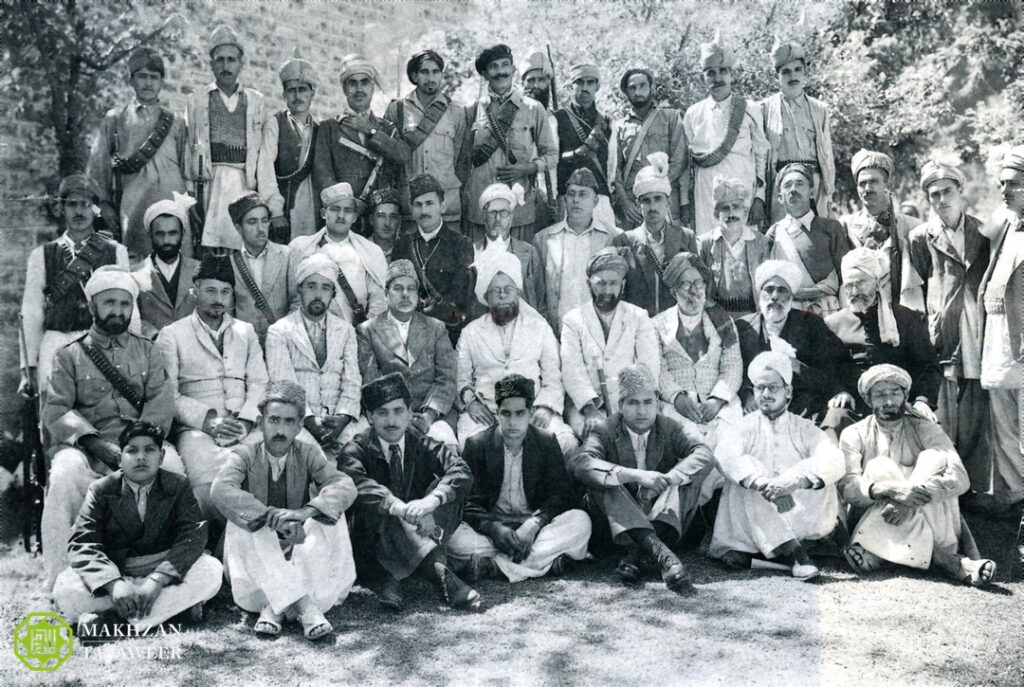
Hazrat Musleh-e-Maudra had an intuition that whether the intentions were such or not, the Arabs would consequently become economic slaves of the West.
When Lord Reading succeeded Chelmsford, Hazrat Musleh-e-Maudra drew a detailed proposal for Indian reforms but also touched upon the issue of Arabia.
After the Ahmadiyya delegation had presented this address to the Viceroy, the Viceroy responded in so much detail that the press covered his speech with headlines saying: “Viceroy’s reply to the Ahmadiyya Community”. (The Leader, 26 June 1921)
Today, so many people claim to be loyal to the Muslim Ummah and its cause, but history has it set in stone that the one Muslim leader foresaw the potential pitfalls of the course taken by Muslims and was none else but Hazrat Mirza Bashiruddin Mahmud Ahmadra.
What the Muslim nations have ended up with is ample proof of Hazrat Musleh-e-Maud’s far-ranging vision, so we leave it here with no comments.
Advice on contracts of oil fields
The post-World War I time brought with it many challenges and twists for world politics. Owing primarily to the economic depression, Western powers struggled to keep their vast empires intact while their own survival remained shrouded in uncertainty.
With the surge of industrialisation, coal – the main fuel for machines and engines – seemed to be running out. In pursuit of substitute forms of fuel, the West had their gazes set on the oil fields of the Middle East.
Therefore, Iraq Petroleum Company and Anglo-Persian Company invested huge funds and petroleum engineering skills on these vast lands that seemed barren on the surface but were richer deep down than any other part of the world. With the expansive reserves lying under the Middle East, the British engineers were certain of finding even more in the soils of Arabia.
To dig down to this treasure trove, the first contract was signed in 1922, between Abdul Aziz ibn Saud and Frank Holmes, who represented the London based company, Eastern and General Syndicate. The oil extracted through this grand drilling operation was bought by the company and exported back home and sold to other countries, while agreeing a certain amount to be paid in return to ibn Saud, the owner of the land.
Then followed oil drillings in the Al Hassa province of Arabia against a fixed amount of money. Taking this amount to have become a regular source of income, the stipend paid to ibn Saud by the British government was terminated. This in effect meant that ibn Saud was now relieved of the treaty signed with the British government and was, apparently, autonomous in his political decisions. (Robert Lacey, The Kingdom, Harcourt Brace Joanovich, London [1982])
Hazrat Musleh-e-Maudra read between the lines of these contracts signed between ibn Saud and the oil excavation companies. He saw the land of the holy shrines being given away by way of eternal economic slavery. Huzoorra, commenting on this situation, said:
“A contract has been signed by Abdul Aziz ibn Saud and a Western company. Although Sultan Abdul Aziz is a wise king, but for unfamiliarity with European history, he is not well-versed with European terminology …
“I sent him a message through a common acquaintance that he ought to observe extreme care when signing the contract because Europeans use very soft terms that have very strong meanings … I have read the contract and I feel that some mistakes have been made. The clauses make the Arab land prone to encroachment by outside governments.
“Only God knows how much I am hurt to read the contract. Although we cooperate with the British and we are quite open about this … but whether it is the British or any other government, we cannot show tolerance when it comes to the Arab world.
“Such precautionary measures could have been taken in signing this contract that could guard the Arab world against the potential dangers. But since the Sultan is not familiar with European terminology and international affairs, he has not been careful enough in the choice of words …
“Contracts should never be signed on the basis of trust; rather, they should be worded with great care and thought”. (Al Fazl Qadian, 3 September 1935)
A sign of the breadth and depth of divinely blessed knowledge
Hazrat Mirza Bashiruddin Mahmud Ahmadra may not have been seen as Khalifatul Masih or Musleh-e-Maudra by the world outside Ahmadiyyat, but their intellectual circles left no opportunity to benefit from his knowledge and divinely enlightened intellect.
To mention just a couple of such incidents, Huzoorra was invited by the intellectuals of Lahore to address them on the topic of Islam and International Relations. Huzoorra addressed them on 23 February in Bradlaugh Hall, Lahore and brought to their attention the tender state that Islam was going through in terms of International affairs. Newspapers covered the event and published the summary. (See Civil and Military Gazette, Lahore, 2 March 1919)
Martin Historical Society, taking advantage of Huzoor’s presence in Lahore, invited him to address them in Islamia College, Civil Lines, Lahore and enlighten them with the history of Islam. Thus, on 24 February 1919, Huzoorra addressed them in the Habibia Hall of the college and delivered the lecture that later got published as Islam Mein Ikhtelafat ka Aghaz (translated as The Outset of Dissension in Islam).
Lest we forget, it must be kept in mind that all this rich material was pouring out of the blessed mind of a “young man” whose bosom had been divinely blessed with a huge expanse of knowledge.
Advice to Khilafat Movement
When, in the 1920s, the Ottoman caliphate issue was used as a tool to instil nationalistic sentiments in Indian Muslims, Hazrat Musleh-e-Maudra guided the leaders of the Khilafat Movement in detail. That they refused to pay heed is one issue, but that they saw the fulfilment of Hazrat Musleh-e-Maud’s predictions is another, both worthy of notice.
Huzoorra had categorically told them that taking up the issue of Ottoman caliphate as one of spiritual nature would damage the cause of Turkey, while taking it up with the British government as an issue of political value for Muslims could potentially bring about desired results.
The Khilafatists thought they knew better than the “young boy” and fought their case as they had planned: presenting to Lloyd George, the British prime minster, the Ottoman case as one of spiritual value.
The transcript of the conversation that took place between the Khilafat delegation and the prime minister is preserved at the British Parliamentary archives and is ample proof that every word of warning by Hazrat Musleh-e-Maudra proved to be most realistic. As soon as Muhammad Ali Jauhar – the head of the delegation – spoke of the Ottomans being the spiritual figurehead of the Muslim world, the prime ministers cross questioning rendered the delegation stumbled, so much so that they were never able to rise back.
Where inklings became realities
It is well known that King Edward VIII of England abdicated to be able to marry an American twice-divorcee. The government and the Church of England painted the whole episode as if the King had given precedence to his personal lustful desire over his national and spiritual duty; spiritual for being the supreme head of the Church of England. The propaganda was so strong and spiteful that it was rolled out by the world press with similar implications.
Now we had the global press, political analysts, historians and experts on royal affairs on one side and the man with divinely gifted knowledge of the spiritual and secular world. Hazrat Musleh-e-Maudra immediately penned a detailed analysis and had it published, stating that the fact is that the king was weary of Christianity and that this episode was actually a proof of the truthfulness of Islam; both in doctrine and in family law.
Huzoorra expressly wrote that the government and the Church had only taken leverage of his love affair, when the fact was that they never wanted a person weary of Christianity to make it to the throne. (The detailed article can be read here: www.alhakam.org/the-abdication-of-edward-viii-an-islamic-take-on-the-crisis-that-shook-the-crown-part-i/)
Many great writers have written great articles and books on Hazrat Musleh-e-Maudra. I do not feel worthy even to comment on the magnificent persona of Hazrat Musleh-e-Maudra. But as a beginner-level student of history, I do want to admit here an experience that I went through as I researched on King Edward VIII’s abdication and Hazrat Musleh-e-Maud’s analysis of the whole episode.
It was not easy, even today, to access the records of the government and the Church of England. Every document that could unearth the goings-on from 85 years ago was hard to get hold of. Then to obtain these documents, put them together and draw a conclusion was even more demanding.
I call on God as my Witness that every fact, every document and every piece of paper that came before my eyes left me astounded to imagine how a man living in a small township in Colonial Punjab could have seen all this so clearly. Even those at the helm of affairs were not able to pick up the reality behind the propaganda when Hazrat Musleh-e-Maud’sra enlightened cognisance had picked up the underlying impetus behind the whole story and brought it to light.
Strange it is to note that even inklings of his heart outweighed heavily researched thoughts of not only his times, but times to come.
I also must confess that what has been mentioned above is only but a tiny droplet in the mighty oceans of the intellect of a divinely promised reformer. We will, insha-Allah, continue to cover more in future. We do believe, however, that it might be a project of many lifetimes.

